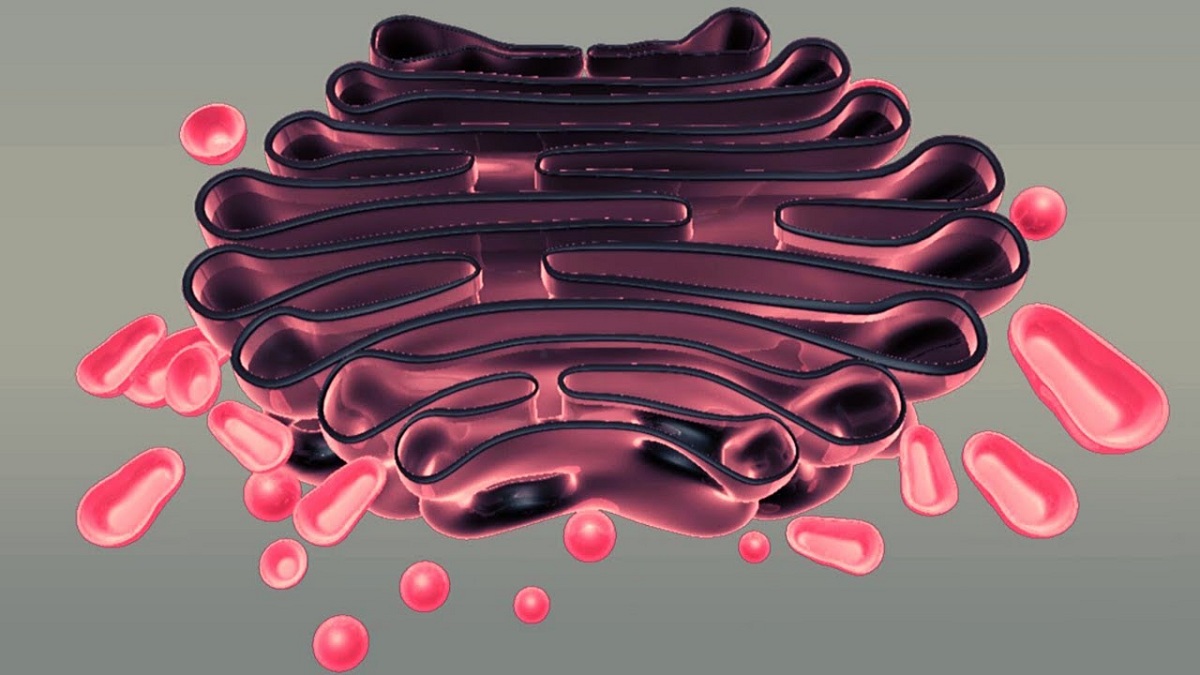
The Golgi apparatus is an organelle that contains all eukaryotic cells (cells with a well-defined nucleus in their cytoplasm) and is part of the endomembrane system. It is an important organelle for the synthesis of many cellular proteins and lipids, and plays a role in packing plants. However, many people do not know what the function of the Golgi apparatus.
For this reason, we are going to dedicate this article to telling you everything you need to know about the function of the Golgi apparatus, its characteristics and importance.
What is the Golgi apparatus

It is an important organelle for the synthesis of many cellular proteins and lipids and functions as a packaging plant: it synthesizes, packages the substances produced by the cells, and distributes them to their respective destinations in the cytoplasm. Cells may have one or more of these Golgi apparatus. (in fact, plants have hundreds), usually located in the cytoplasm near the nucleus and the endoplasmic reticulum.
Depending on the cell, each device may contain a variable number of stacked pools or "bags" to contain proteins or lipids. In this way, it is an important organelle for the culmination of cellular life and organic synthesis.
The Golgi apparatus takes its name from its discovery at the beginning of the 1906th century, when the Italian scientist and Nobel Prize winner for Medicine in 1897, Camilo Gorgi, successfully described it in detail based on the initial observations made in XNUMX by the Spaniard Santiago La Santiago. Ramón y Cajal, with whom he shared the award.
The use of electron microscopy after 1950 he corroborated Golgi's description with considerable accuracy. The Golgi apparatus consists of the reticulum, a group of membranous saccules, that is, submicroscopic, flat, stacked vessels, surrounded by a tubular network and a collection of vesicles.
Inside each dictyosome is a group of "packaged" proteins. In fact, talking about dictyosomes, the Golgi or the Golgi system is basically talking about the same thing. The size of the dictyosomes and groups of the Golgi apparatus is variable, depending on the type of cell, the species and the moment of its metabolism.. Its diameter is usually estimated between 1 and 3 microns.
Modular
The Golgi apparatus contains three distinct functional areas:
- Cis-golgi region. The innermost part, closest to the rough endoplasmic reticulum (RER), is where vesicles containing newly synthesized proteins originate.
- middle region. Transition zone between the Cis and Trans regions.
- Trans-golgi region. It is closer to the plasma membrane, where it is modified to send each protein and lipid to its specific destination.
However, the full workings of the Golgi apparatus have not been fully unraveled.
Golgi Apparatus Function

The general function of the Golgi apparatus is to "package" and "tag" each protein vesicle for successful delivery to its destination, much like a produce packing plant.
In this sense, the Golgi inspection product is impeccable, intact and assembled, linking simple molecules with complex ones and identifying them according to their destination: other organelles or cell membranes, to be secreted into the environment.
Other functions of the Golgi apparatus include:
- It absorbs substances from the cytoplasm. Like water, sugars or lipids, especially those of the secretory vesicles.
- form secretory vesicles. It creates protein sacs that transport their contents out of the cell.
- make enzymes. Many enzymes originate from this organelle because they are proteins with specific functions.
- Create specialized substances. It contributes to the formation of cell membranes, special cells (such as sperm), proteins (such as milk, etc.).
- secreted glycoproteins. Proteins that contain carbohydrates (sugars) are built internally.
- lysosomes are produced. Organelles responsible for cellular digestion.
The transport vesicles that traverse the Golgi apparatus can be of the following types:
- They contain proteins that reach the outside of the cell by constitutive secretion (exocytosis) that occurs at the plasma membrane.
- Secretory vesicles are also destined to reach the outside of the cell, but not immediately: will be stored in the cell, waiting for a triggering stimulus to occur. This process is called regulated secretion.
- Its destination is the lysosome: the organelle produced by the Golgi system itself, responsible for breaking down foreign material that enters the cell (cellular digestion).
Golgi transport mechanism

The exact mechanism of how the protein passes through the Golgi apparatus is unknown. But there are two main assumptions about how it happened:
- Cistern maturation model. Creating a new tank will "push" the old tank through the device.
- Vehicle transport model. The theory assumes that the Golgi is a stable and static entity and that the movement of the vesicles is due to the properties of its internal proteins.
Importance
The lysosomes produced by the Golgi apparatus contain hydrolytic and proteolytic enzymes capable of breaking down substances of extracellular or intracellular origin, that is, responsible for cellular digestion.
Lysosomes are pockets of enzymes that, if released into the cell, would destroy the cell completely. Therefore, these organelles have a specialized membrane to stop it. Lysosomes are commonly found in animal cells, but not in plant cells.
The device is essential in the protein production circuit of cells and, in turn, in the protein production circuit of organisms. It acts as a link between the inside of the cell (the nucleus and the endoplasmic reticulum where proteins are made) and the outside of the cell. It is an important biochemical transport mechanism.
In some cases, Golgi defects can lead to diseases such as mucolipidosis II, which affects the Golgi protein recognition machinery, so that Cellular digestion cannot proceed properly and the lysosomes fill with undigested material. This is a congenital disease with fatal consequences that does not allow to live beyond 7 years.
Many other diseases in the current study are thought to arise from Golgi defects, including Pelizaeus-Merzbacher disease, Angelman syndrome, wrinkled skin syndrome, and Ducheme muscular dystrophy, among others.
I hope that with this information you can learn more about the function of the Golgi apparatus and its characteristics.